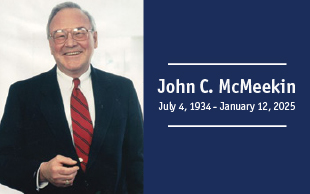For Jennifer Lauby, PhD, senior research scientist at PHMC, and her research team, the campaign to curtail rising rates of hypertension and type 2 diabetes in African-American males doesn’t start with a pill or a pin prick.
It starts with a pamphlet.
Lauby is the lead investigator for Black Men in HD, a new PHMC research initiative intended to create culturally relevant materials, including paper pamphlets and videos, that target African-American men. Lauby hopes that increased awareness will help patients better manage these devastating diseases.
It’s not enough to focus just on medication. We’re trying to help men take more of a lead in taking care of themselves.”
“It’s not enough to focus just on medication,” Lauby explains. “We’re trying to help men take more of a lead in taking care of themselves.”
The need is clear. Data collected through PHMC’s Community Health Data Base shows that 14.5% of African-American men living in Philadelphia have been diagnosed with diabetes compared with just 8.1% of African-American men nationally.
Similar disparities between local and national rates exist for hypertension, with 39.5% of local African-American men receiving a diagnosis compared with 26.5% of African-American men nationally.
Determined to reverse those trends, Lauby’s team partnered with Health Promotion Council, a PHMC affiliate with a history of promoting health and preventing chronic disease in at-risk populations. Together, they convened an advisory council called Journey to Men’s Health to support the Black Men in HD project.
Funded by the US Department of Health and Human Services, Black Men in HD—the H stands for hypertension and the D for diabetes—tackles the problem in a three-stage, three-year approach intended to run through the fall of 2013. The first stage, now underway, involves conducting a series of focus groups at local homeless shelters, places of worship, drug rehabilitation centers, and a local jail with the goal, according to Lauby, “to reach those not receiving optimal care.”
At those sessions, the participating men review and critique a series of three pamphlets provided by the Agency for Healthcare Research and Quality (AHRQ), the project’s primary funder. AHRQ supports research that helps people make more informed decisions and improves the quality of healthcare services.
In the early stages of this research, the team has already confronted some of the challenges in addressing health literacy and cultural relevance. Research associate Kayshin Chan noted that many of the men participating in the focus groups indicated “mistrust in the medical community” and felt as though the currently available pamphlets developed by AHRQ were written with too much clinical detachment.
As one focus group participant commented about the medical terminology, “Sometimes the doctor uses a thousand-dollar word to convey a five-dollar idea.”
Research associate Lee Carson found the men “very savvy about their condition,” but many of the men only gained the knowledge informally, over a long period of trial and error.
Traditionally, men are not “help-seekers” by nature and, according to Chan, this high-risk population often gets information in a piecemeal, rather than comprehensive, way.
Carson hopes the Black Men in HD team can overcome those barriers by gathering much of the informal knowledge in a centralized source that is “as culturally specific as possible to black men.”
During the first stage of the project, the team will use the feedback from focus group participants to develop new pamphlets and a short video based on the AHRQ materials. Chan says the research team plans to make the pamphlets action-oriented and functional. “Even if we make the language simple it will still contain all the important information and be geared toward an adult audience. We want to make it active and focused on care,” says Chan.
In the second stage of the project, the researchers will test the effectiveness of the newly developed materials in clinical and community settings. During stage three, the Black Men in HD team will disseminate the materials at medical and community access points around the region.
Although it’s too early to say exactly what the new materials might look like, Carson offered a few hints.
“Something with a sports theme,” he said, “like a football game or basketball game...a guide on how to play the game.”
“We really frame it as a lifestyle change,” Carson elaborated, “and an ongoing commitment to yourself and your body.”
Big diseases, big changes, two little pamphlets.





